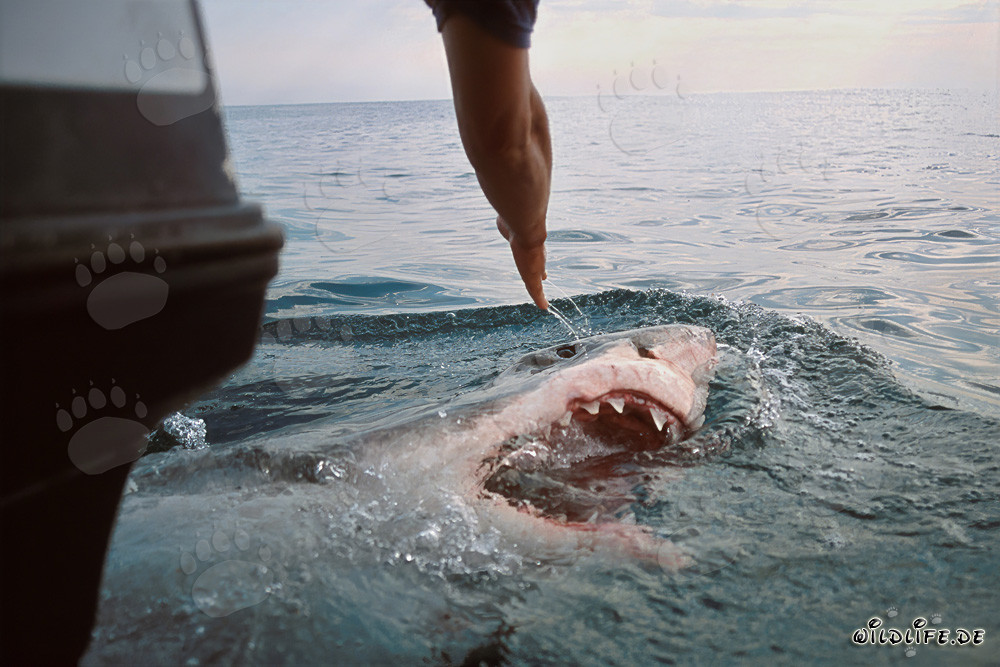The Great White Shark often lifts its head above water to better scan the water surface (00000352)
Description: The Great White Shark (Carcharodon carcharias) emerges directly behind the boat. Six sea miles from the coast of Gansbaai, near Dyer Island and Geyser Rock, a Great White Shark breaks through the water surface. African penguins, cormorants, and a large colony of South African fur seals live here. The surface hunter often finds its prey on the water surface. The super-robber Great White Shark with its size, strength, and fearsome jaws is a permanent threat to the South African fur seals around Dyer Island and Geyser Rock. The Great White Shark belongs to the mako shark family and is characterized by very large gill slits and long pectoral fins. The largest Great White Shark ever caught had a length of 6.4 meters and an estimated weight of 1500 kg. In surprise attacks from the depths, they accelerate so fast that they sometimes shoot out of the water. The jaws of the Great White Shark with the sharp triangular teeth in the upper jaw and the pinpointed teeth in the lower jaw are notorious and dreaded. In order to catch larger prey, the upper jaw is movable and can be pushed forward. Lost or damaged teeth are replaced easily for a lifetime. The Great White Shark is the top robber of the food chain and plays a crucial role in conserving the ecological balance in the ocean. Very little is known about their behavior and habitat. The Great White Shark has existed almost unchanged for millions of years and has optimally adapted to its environment. However, there is now a danger that it will be exterminated by us humans.
Location: Western Cape, Gansbaai/Dyer Island, South Africa
Date of Capture: 14.05.2000

